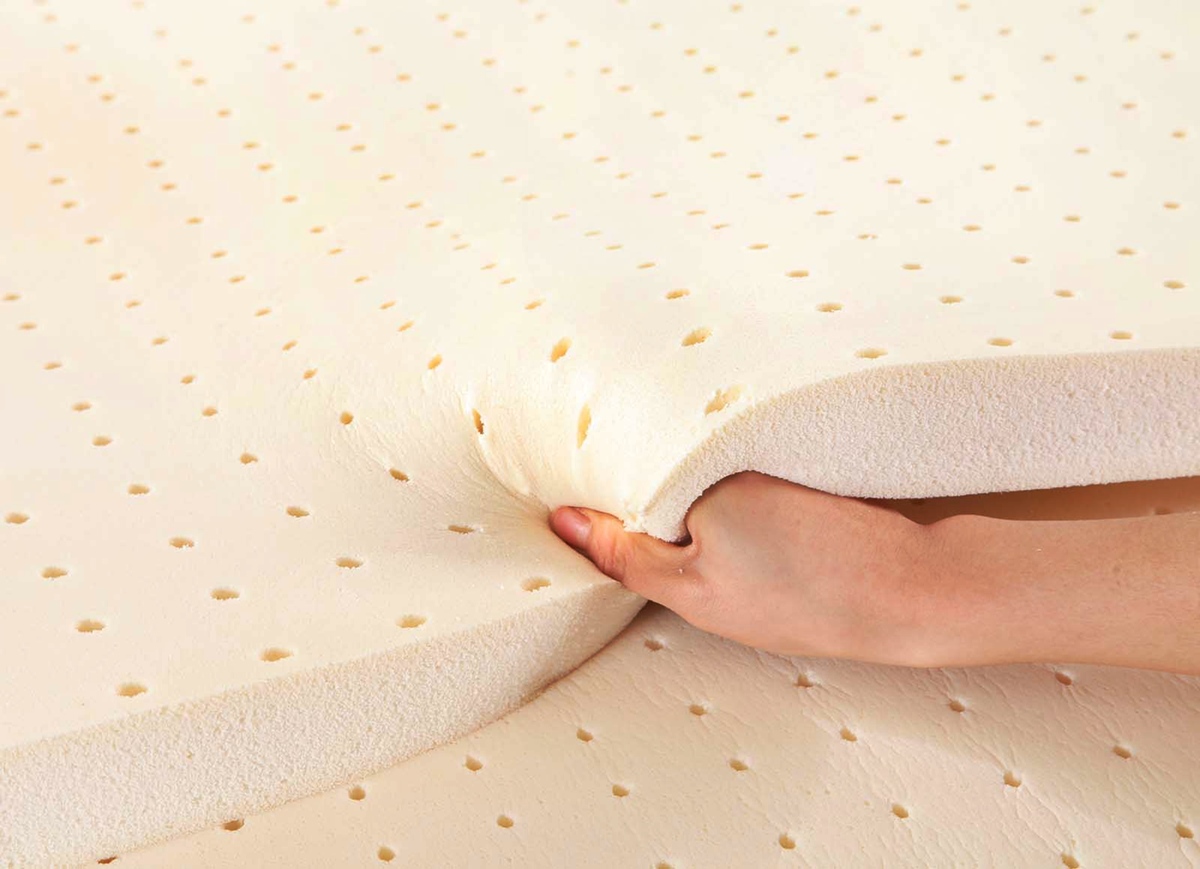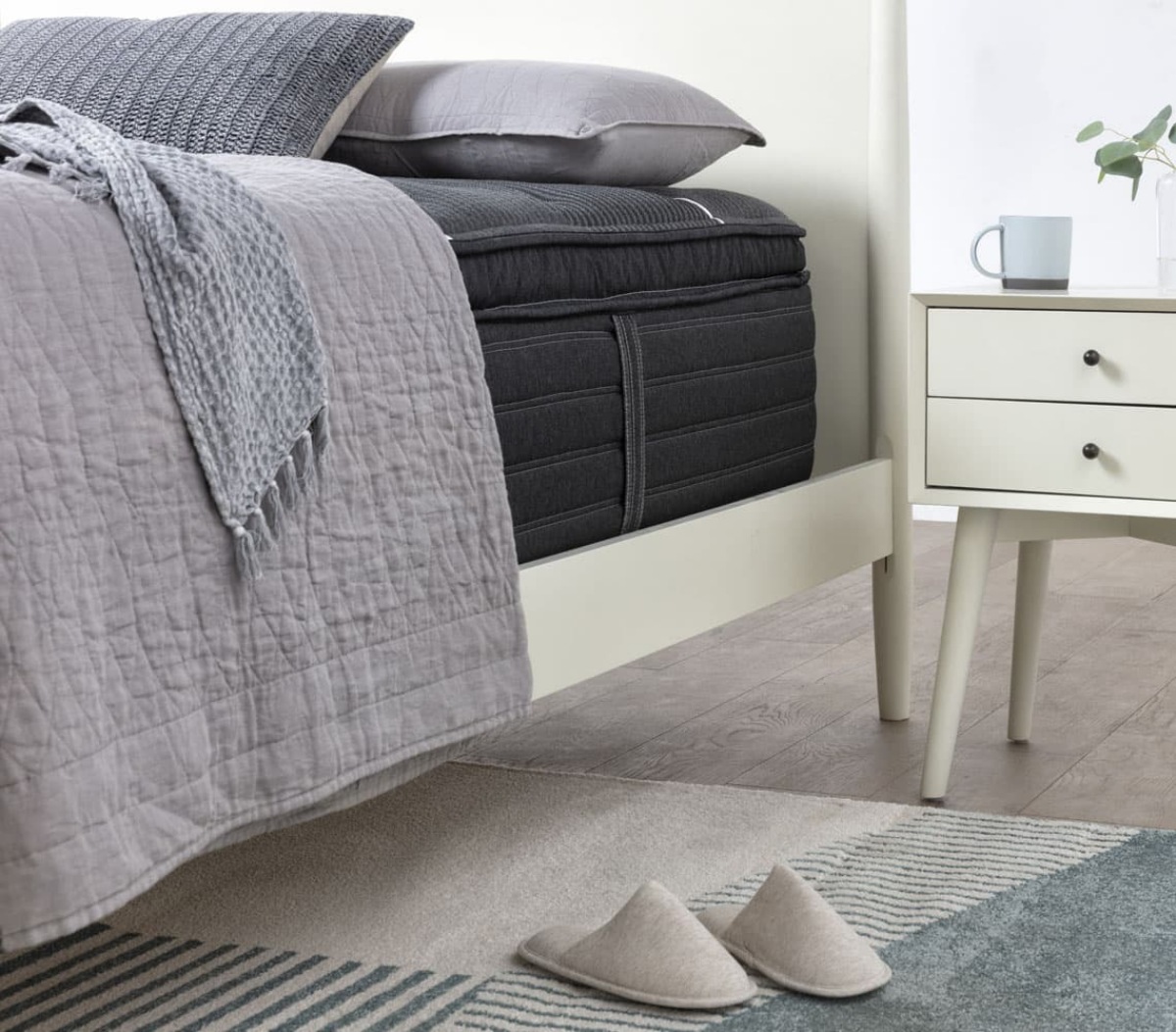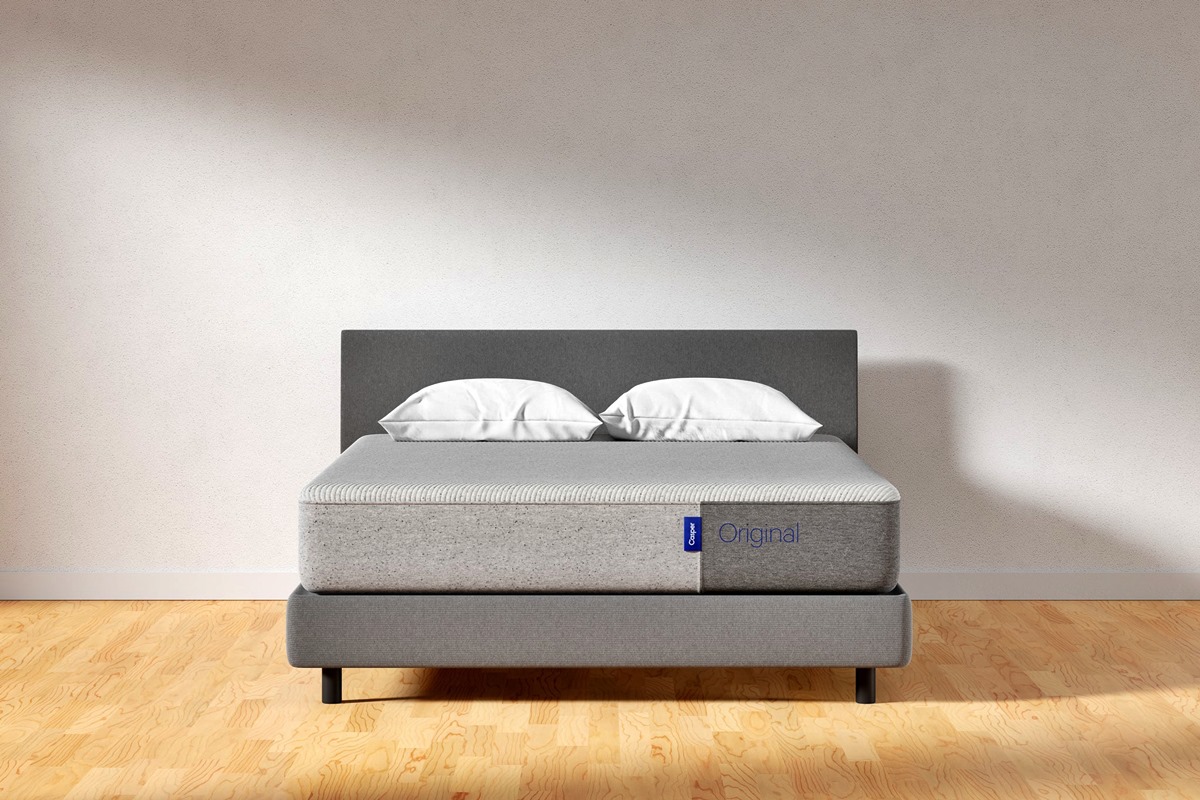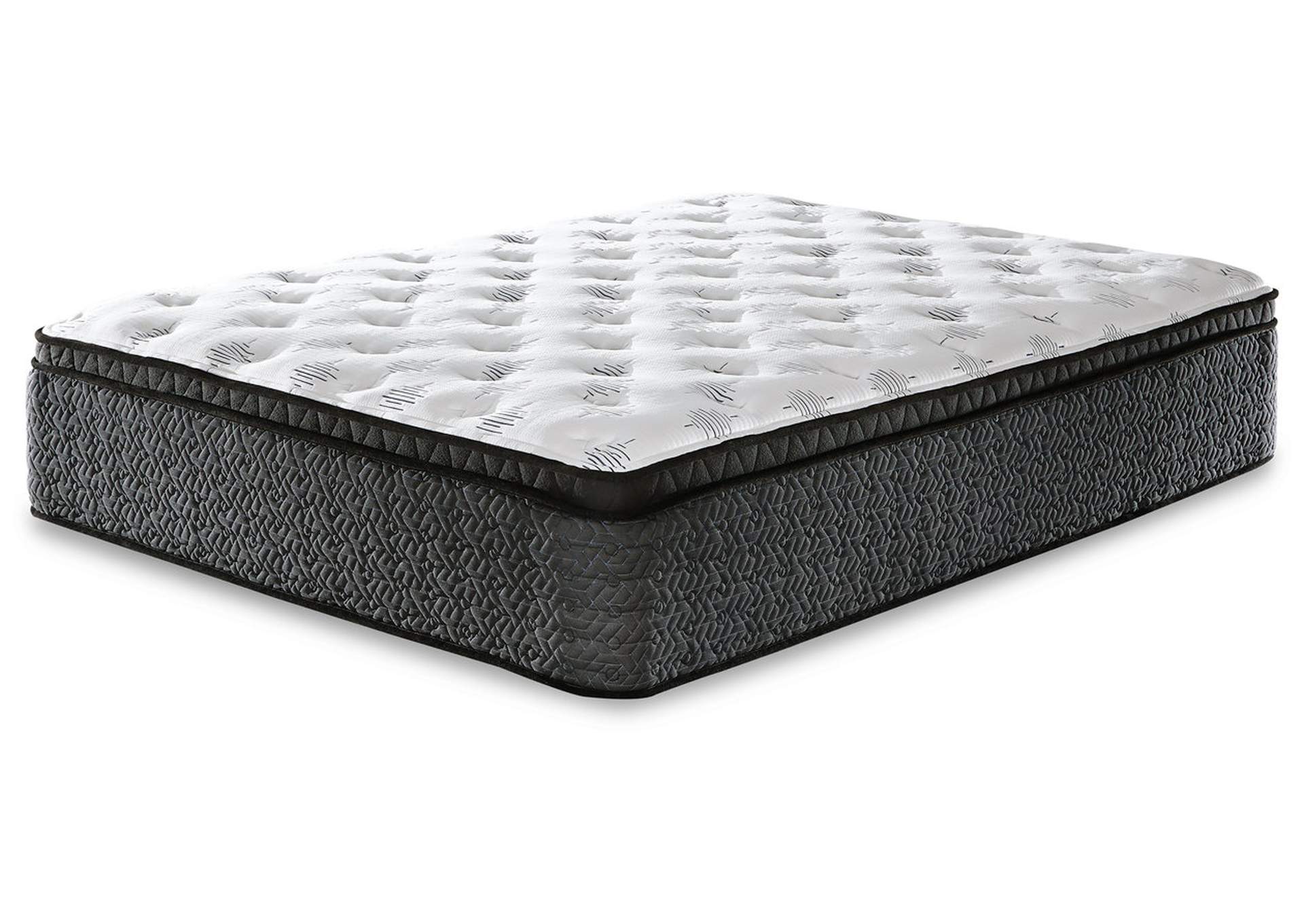Home>Furniture>Bedroom Furniture>How To Make A Mattress Softer


Bedroom Furniture
How To Make A Mattress Softer
Modified: October 18, 2024
Discover effective techniques to make your mattress softer in the bedroom. Upgrade your bedroom furniture with our expert tips and enjoy a more comfortable sleep.
(Many of the links in this article redirect to a specific reviewed product. Your purchase of these products through affiliate links helps to generate commission for Storables.com, at no extra cost. Learn more)
Introduction
Welcome to the world of bedroom furniture, where comfort and style come together to create the perfect sanctuary for a good night’s sleep. When it comes to finding the ideal mattress, the right level of firmness plays a crucial role in ensuring optimal comfort and support. However, what if you find that your mattress feels a bit too firm for your liking? The good news is that there are several ways to make your mattress softer and enhance your sleep experience.
In this article, we will explore various methods to achieve the desired level of softness for your mattress. Whether you have a new mattress that needs some breaking in or an existing mattress that needs a little extra cushioning, we’ve got you covered. So, let’s dive in and discover how to make your mattress softer.
Key Takeaways:
- Personalize your sleep experience by making your mattress softer to alleviate pressure points, enhance comfort, and promote better sleep quality, catering to your unique preferences and needs.
- Explore affordable and non-invasive methods such as using a mattress topper or pad, adjusting layers, and rotating your mattress to achieve the desired level of softness and create a cozy sleep environment.
Read more: How To Make A Crib Mattress Softer
Why Do You Want to Make Your Mattress Softer?
Before venturing into the different ways to make your mattress softer, it’s essential to understand why you want to make this adjustment. Every person has unique sleep preferences, and the ideal firmness level varies from individual to individual.
Some people may prefer a softer mattress because it provides a more plush and cozy feel, cradling their body for a cloud-like sleep experience. A softer mattress can also be beneficial for those with certain health conditions, such as joint pain or pressure point sensitivity, as it can help alleviate discomfort and promote better sleep.
It’s important to note that making your mattress softer does not necessarily mean compromising on support. By finding the right techniques to adjust the firmness, you can maintain a healthy balance between softness and support for a truly comfortable and rejuvenating sleep.
Key Takeaways:
- Personalize your sleep experience by making your mattress softer to alleviate pressure points, enhance comfort, and promote better sleep quality, catering to your unique preferences and needs.
- Explore affordable and non-invasive methods such as using a mattress topper or pad, adjusting layers, and rotating your mattress to achieve the desired level of softness and create a cozy sleep environment.
Read more: How To Make A Crib Mattress Softer
Why Do You Want to Make Your Mattress Softer?
When it comes to getting a good night’s sleep, the comfort of your mattress plays a crucial role. If you find that your mattress feels too firm, you may be wondering why you would want to make it softer in the first place. Let’s explore some reasons why you might want to adjust the firmness of your mattress.
1. Personal Preference: Every individual has unique sleep preferences. Some people prefer the sensation of sinking into a soft and plush mattress, feeling cradled and supported. If you find that your current mattress feels too firm and is not providing the level of softness you desire, making it softer can help you achieve a more comfortable sleep environment.
2. Pressure Relief: Softening your mattress can be particularly beneficial for those who experience pressure point discomfort. If you often wake up with aches and pains, a softer mattress can provide better pressure relief by contouring to your body’s curves and distributing your weight more evenly. This can help alleviate pressure on sensitive areas, such as your shoulders and hips.
3. Joint or Muscle Pain: If you suffer from conditions such as arthritis or chronic muscle pain, a softer mattress can help reduce discomfort while you sleep. Softness can provide cushioning for your joints and muscles, relieving stress and promoting better sleep quality.
4. Combination Sleepers: If you frequently change positions throughout the night, a softer mattress can offer greater ease of movement. The added cushioning allows for smoother transitions and minimizes the likelihood of feeling stuck or restricted on a firmer surface.
5. Partner Preferences: Sharing a bed with a partner can sometimes involve compromise. If your partner prefers a softer mattress and you find yours too firm, adjusting the firmness can help both of you achieve a sleep surface that meets your individual needs.
Before making any changes to your mattress’s firmness, it’s important to consider your specific sleep preferences and consult with your sleep partner, if applicable. Understanding your reasons for wanting a softer mattress will guide you in choosing the most suitable methods to achieve the desired level of comfort.
Assess the Current Firmness of Your Mattress
Before proceeding with making your mattress softer, it’s important to assess the current firmness level of your mattress. This will help you determine the appropriate steps to take in order to achieve your desired level of comfort. Here are a few methods to assess the firmness of your mattress:
1. Personal Comfort: Lie down on your mattress and assess how it feels to you. Pay attention to any areas of discomfort or pressure points. If you find that your mattress feels too firm and doesn’t provide the desired level of cushioning, it may be a sign that you need to make it softer.
2. Pressure Point Test: Press down on various areas of your mattress, such as the shoulders, hips, and lower back. If you feel excessive pressure or discomfort, it could indicate that your mattress is too firm for your liking.
3. Sleep Disruptions: Take note of any sleep disruptions or discomfort you experience throughout the night. If you frequently wake up feeling sore or find it difficult to get comfortable, it may be an indication that your mattress is too firm.
4. Body Alignment: Observe your body alignment when lying on your mattress. Your spine should maintain a neutral position, with proper alignment from head to toe. If your mattress is too firm, it may cause your spine to be improperly aligned, resulting in discomfort or pain.
By assessing the current firmness of your mattress, you can have a better understanding of whether it’s necessary to make adjustments to make it softer. Remember, the ideal firmness level varies from person to person, and it’s important to find the right balance of support and cushioning for your specific needs.
Evaluate the Material and Construction of Your Mattress
When it comes to making your mattress softer, it’s important to consider the material and construction of your mattress. Different materials provide varying levels of comfort and support. Here are some key factors to evaluate:
1. Foam Mattress: If you have a foam mattress, such as memory foam or latex, it’s important to understand the density and ILD (Indentation Load Deflection) rating of the foam layers. Higher density foam tends to be firmer, while lower density foam provides more softness and contouring. Check the manufacturer’s information or contact the retailer to determine if your foam mattress can be adjusted for a softer feel.
2. Innerspring Mattress: Innerspring mattresses contain coils that provide support. The gauge of the coils determines the firmness of the mattress. Thicker coils tend to result in a firmer feel, while thinner coils offer more flexibility and softness. If your innerspring mattress feels too firm, you may consider adding a mattress topper or pad to enhance its softness.
3. Hybrid Mattress: Hybrid mattresses combine the support of innerspring coils with the contouring comfort of foam or latex layers. Depending on the specific materials used, the firmness level can vary. Evaluate the composition of your hybrid mattress to determine if adjustments are possible. Adding a topper or pad can help soften the overall feel.
4. Pillow-top mattresses: Some mattresses come with built-in pillow-top layers for added plushness and softness. These mattresses typically have an extra layer of padding sewn onto the top, providing a softer surface. If your mattress already has a pillow-top, verify if it can be flipped to adjust the firmness level. If not, other methods, such as using a mattress topper, may be necessary.
5. Warranty and Return Policies: Before making any changes to your mattress, double-check the warranty and return policy. Modifying the mattress, such as removing layers or adding toppers, may void the warranty. Make sure you fully understand the terms and conditions to avoid any issues.
Understanding the materials and construction of your mattress will help you determine the best approach to make it softer without compromising its overall integrity. Whether it’s adjusting the layers, adding a topper or pad, or exploring other options, you can find the right solution to achieve your desired level of softness and comfort.
Read more: How To Make My Memory Foam Mattress Softer
Use a Mattress Topper
If you find that your mattress is too firm and in need of some softness, using a mattress topper can be an excellent solution. A mattress topper is a removable layer that sits on top of your existing mattress to provide extra cushioning and adjust its firmness level. Here’s how you can use a mattress topper to make your mattress softer:
1. Choose the Right Material: Mattress toppers come in various materials, including memory foam, latex, down alternative, and feather. Each material offers a different level of softness and support. Memory foam toppers conform to your body’s shape and alleviate pressure points, while latex toppers provide an added bounce and responsiveness. Consider your personal preferences and needs when selecting the material for your topper.
2. Select the Thickness: Mattress toppers are available in different thickness options, typically ranging from 2 to 4 inches. Thicker toppers generally provide a softer feel and more cushioning. However, keep in mind that adding too much thickness may affect the overall support of your mattress. Choose a thickness that strikes the right balance between softness and support for your individual comfort.
3. Place the Topper on Your Mattress: To use a mattress topper, simply place it directly on top of your existing mattress. Make sure it’s aligned properly and covers the entire surface. Most toppers come with elastic straps or a fitted sheet-like design to secure them in place. This helps prevent the topper from shifting or sliding while you sleep.
4. Test the Comfort: Lie down on the mattress with the topper and assess its comfort level. Pay attention to how the topper affects the overall firmness and feel of your mattress. If it provides the desired softness and improves your sleep experience, you’ve found the right solution. If not, you may need to consider alternative methods or explore different topper options.
5. Maintain and Clean: Mattress toppers should be maintained and cleaned according to the manufacturer’s instructions. Regularly remove and wash the topper cover, if applicable, to keep it fresh and free from dust and allergens. This will help prolong the lifespan of your topper and ensure optimal hygiene.
Using a mattress topper is an affordable and non-invasive way to make your mattress softer. It allows you to customize the feel of your sleep surface without the need to replace your entire mattress. By selecting the right material and thickness, you can transform the firmness of your mattress and create a more comfortable and inviting sleeping environment.
Consider adding a mattress topper made of memory foam or down feathers to increase softness. You can also try rotating the mattress regularly to prevent sagging and maintain its softness.
Opt for a Mattress Pad
If you’re looking to make your mattress softer, another option to consider is using a mattress pad. A mattress pad is a thin layer of cushioning that sits on top of your mattress, providing extra comfort and softness. Here’s how you can opt for a mattress pad to enhance the softness of your mattress:
1. Choose the Right Material: Mattress pads come in various materials, including cotton, polyester, wool, and down alternative. Each material offers a different level of softness and breathability. Cotton pads are lightweight and breathable, while wool pads provide natural temperature regulation. Consider your preferences and any specific needs, such as allergies or sensitivities, when selecting the material for your mattress pad.
2. Determine the Thickness: Mattress pads typically range in thickness from 1 to 3 inches. Thicker pads generally provide more cushioning and softness. However, keep in mind that adding too much thickness may affect the overall support of your mattress. Choose a thickness that adds the desired level of softness while maintaining adequate support.
3. Place the Pad on Your Mattress: Simply lay the mattress pad flat on top of your existing mattress. Make sure it covers the entire surface and is aligned properly. Some pads come with anchor bands or a fitted skirt to secure them in place. This helps prevent the pad from shifting or sliding while you sleep.
4. Test the Comfort: Lie down on the mattress with the mattress pad and assess its comfort level. Pay attention to how the pad affects the overall firmness and feel of your mattress. If it provides the desired softness and enhances your sleep experience, you’ve found the right solution. If not, you may consider trying a different material or thickness to improve the softness.
5. Maintain and Clean: Mattress pads should be maintained and cleaned according to the manufacturer’s instructions. Regularly remove and wash the pad to keep it fresh and free from dust and allergens. This will help prolong the lifespan of your pad and ensure optimal hygiene.
Opting for a mattress pad is a convenient and cost-effective way to add softness to your mattress. It allows you to customize the feel of your sleep surface without the need for major changes. By selecting the right material and thickness, you can transform the firmness of your mattress and create a more comfortable and inviting sleep environment.
Consider a Pillow-Top Mattress Pad
If you’re looking to make your mattress significantly softer and add a layer of luxurious comfort, a pillow-top mattress pad might be the perfect solution. A pillow-top mattress pad is a thick and plush pad that resembles the cushioning of a pillow, providing an extra layer of softness and support. Here’s why you should consider a pillow-top mattress pad:
1. Enhanced Softness: Pillow-top mattress pads are designed specifically to add softness and comfort to your mattress. The additional layer of padding on top mimics the feeling of sleeping on a cloud, providing a plush and cozy sleeping surface. If your mattress feels too firm or lacks the desired softness, a pillow-top pad can make a noticeable difference in the overall comfort of your bed.
2. Pressure Relief: The soft and cushioning nature of a pillow-top pad can help alleviate pressure points on your body, such as your shoulders and hips. It conforms to your body’s contours, allowing for better weight distribution and reducing the risk of waking up with soreness or discomfort.
3. Easy to Install: Adding a pillow-top pad to your mattress is simple and hassle-free. The pad typically comes with elastic straps or a fitted skirt that secures it in place on top of your mattress. This prevents the pad from shifting or moving during the night, ensuring a consistent level of softness throughout your sleep.
4. Versatility: Pillow-top mattress pads are available in various materials and thicknesses, allowing you to choose the one that best suits your preferences and needs. Whether you prefer the plushness of memory foam or the softness of down alternative, there are options available to cater to your specific comfort requirements.
5. Cost-Effective Solution: Investing in a pillow-top mattress pad is a more affordable alternative to purchasing a brand-new mattress. It allows you to modify the firmness of your existing mattress without breaking the bank. Additionally, a pillow-top pad can help extend the lifespan of your mattress by providing an extra layer of protection against wear and tear.
When considering a pillow-top mattress pad, keep in mind that it will add height and may affect the overall support of your mattress. However, if you prioritize softness and a cozy sleep experience, a pillow-top pad can transform your ordinary mattress into a luxurious retreat.
Adjusting the Layers of Your Mattress
If you have a mattress that allows for customization, adjusting the layers can be an effective way to make your mattress softer. This method is commonly used in foam or hybrid mattresses that have removable layers. Here’s how you can adjust the layers of your mattress to achieve the desired level of softness:
1. Assess the Layer Setup: Begin by understanding the construction of your mattress and how the layers are arranged. Some mattresses have a zippered cover or a designated access point that allows you to easily access the layers. Determine if your mattress has this feature or if you need to remove the mattress cover to access the layers.
2. Rearrange or Remove Layers: Carefully remove the mattress cover, if necessary, to gain access to the layers. Depending on your mattress’s design, you may have a comfort layer, transitional layer, or support layer. Consider the firmness level of each layer and determine if any adjustments are needed. You may choose to rearrange or remove layers to modify the overall feel of the mattress.
3. Reassemble the Mattress: Once you have made the necessary adjustments to the layers, reassemble the mattress in the desired configuration. Ensure that each layer is properly aligned and that the mattress cover is securely fastened. Take the time to flatten out any wrinkles or creases in the cover for a smooth surface.
4. Test the Comfort: Lie down on the mattress and assess how the adjustments to the layers have affected the overall feel. Pay attention to the softness, cushioning, and support provided by the modified setup. If the mattress now feels softer and more comfortable, you have successfully adjusted the layers to meet your preferences. If further modifications are needed, repeat the process until you achieve the desired level of softness.
5. Monitor Your Comfort: It’s important to remember that adjusting the layers of your mattress can affect its overall support and lifespan. Continuously monitor your comfort level and the performance of the mattress after making changes. If you start to experience discomfort or notice any issues with the support, consider readjusting the layers or seeking professional advice.
Adjusting the layers of your mattress allows you to customize its firmness and contouring properties to match your preference for a softer sleep surface. This method is ideal for mattresses that offer flexibility and customization options. By taking the time to understand your mattress’s construction and make precise adjustments, you can create a personalized sleeping experience that aligns perfectly with your comfort needs.
Read more: How To Make A Toothbrush Softer
Rotate and Flip Your Mattress
One simple and effective way to make your mattress feel softer is by rotating and flipping it. This method is especially useful for traditional innerspring mattresses that have a uniform construction on both sides. Here’s how you can rotate and flip your mattress to enhance its softness:
1. Check the Mattress Guidelines: Before you rotate and flip your mattress, it’s essential to check the manufacturer’s guidelines. Some mattresses are designed to be one-sided and cannot be flipped. Ensure that your mattress is suitable for rotation and flipping to avoid damaging the materials or voiding the warranty.
2. Rotate: Begin by rotating your mattress 180 degrees. This means that the head of the mattress will become the foot, and the foot will become the head. This helps distribute the wear evenly across the surface, as different areas of the mattress experience different levels of pressure over time. Rotating the mattress allows for more even compression and can help make it feel softer in certain areas.
3. Flip (If Applicable): If your mattress is double-sided and can be flipped, proceed to this step. Flip the mattress over, so the side that was previously facing down is now facing up. Flipping the mattress allows you to experience a different comfort layer and can help restore some of the original softness if the top side has become worn or compressed over time.
4. Repeat Regularly: It’s important to establish a routine for rotating and flipping your mattress. The frequency will depend on the specific recommendations from the manufacturer. In general, it’s a good practice to rotate your mattress every three to six months and flip it every six to 12 months. This schedule helps maintain the longevity of the mattress and ensures that you’re consistently benefiting from a fresher and more comfortable sleep surface.
5. Monitor the Changes: After rotating and flipping your mattress, pay attention to how the softness and support have improved. Rotate your body around the mattress to gauge if there are specific areas that feel softer or more supportive. Take note of any changes in your sleeping experience and adjust the schedule or method of rotation and flipping accordingly.
Rotating and flipping your mattress not only helps make it feel softer but also prolongs its lifespan by preventing uneven wear. Regularly rotating and flipping can promote better comfort and support over time. Remember to follow the guidelines provided by the mattress manufacturer and consult with them if you have any concerns or questions.
Break-In Your Mattress
When you purchase a new mattress, it may feel firmer than expected initially. This is because many mattresses require a break-in period to reach their optimal level of softness and comfort. Breaking in your mattress can help it conform to your body and alleviate any initial stiffness. Here are some steps to effectively break-in your mattress:
1. Give It Time: Allow your new mattress some time to adjust and settle. Most mattresses require a break-in period of about 30 days. During this time, the materials will gradually adjust to your body and the mattress will soften up. It’s important to refrain from making immediate judgments about the mattress’s firmness during the initial days or weeks.
2. Sleep on It Regularly: Use your new mattress consistently to speed up the break-in process. The more you sleep on it, the quicker it will adapt to your body’s shape and provide the desired level of softness. Aim to sleep on the mattress every night to help loosen up the materials and promote better conforming and comfort.
3. Rotate the Mattress: During the break-in period, it’s beneficial to regularly rotate your mattress. This helps distribute the weight evenly and prevents excessive compression in specific areas. Consult the manufacturer’s guidelines for the suggested rotation schedule. Rotating the mattress ensures that all parts get an equal amount of pressure and can aid in achieving a softer feel overall.
4. Apply Light Pressure: To expedite the break-in process, you can apply light pressure in specific areas of the mattress. For example, you can gently knead or compress the surface with your hands or use your body weight to apply light pressure points along the edges or center of the mattress. Be careful not to cause any damage or excessive sagging while doing this.
5. Be Patient: Breaking in a new mattress takes time, so it’s important to be patient. Allow your body to adjust to the new sleep surface, and give the mattress the opportunity to conform and soften up. Keep in mind that different materials and mattress types may have different break-in durations. Trust the process and have faith that your mattress will reach the desired level of softness with time.
By following these steps, you can effectively break-in your mattress and achieve the desired level of softness and comfort. Remember, the break-in period varies from person to person, and it’s essential to give your mattress adequate time to adjust. If you have any concerns about the firmness or comfort of your mattress after the break-in period, consult with the retailer or manufacturer for further guidance.
Conclusion
Finding the ideal level of softness for your mattress is essential for a comfortable and rejuvenating sleep experience. Whether you have a new mattress that needs some breaking in or an existing mattress that feels too firm, there are various methods to make your mattress softer and enhance your sleep quality.
Assessing the current firmness of your mattress is the first step in understanding your preferences and needs. This evaluation will guide you in determining the most suitable approach to achieve the desired level of softness.
If your mattress allows for customization, adjusting the layers can be an effective method. By rearranging or removing layers, you can create a mattress configuration that better aligns with your comfort preferences.
Using a mattress topper or a mattress pad is a simple and affordable solution to add an extra layer of softness. Whether you choose a memory foam topper, a plush mattress pad, or a luxurious pillow-top option, these additions can transform the feel of your mattress and provide the desired level of cushioning.
Additionally, rotating and flipping your mattress can help distribute the wear evenly and make it feel softer in certain areas. This method is particularly useful for traditional innerspring mattresses that have a uniform construction on both sides.
For those who purchase a new mattress, allowing for a break-in period is crucial. Most mattresses require several weeks to reach their optimal level of comfort and softness. Consistently sleeping on the mattress, rotating it, and applying light pressure can help expedite the break-in process.
In conclusion, making your mattress softer is a personal and adjustable journey. Understanding your comfort preferences, evaluating your mattress’s construction, and implementing the appropriate methods can help you achieve the perfect balance of softness and support for a restful night’s sleep.
Remember to consider the warranty and return policies, maintain and clean your mattress accessories regularly, and consult with the manufacturer or retailer if you have any specific concerns or questions.
Embrace the possibilities of enhancing the softness of your mattress and create your own haven for a truly blissful sleep experience.
Frequently Asked Questions about How To Make A Mattress Softer
Was this page helpful?
At Storables.com, we guarantee accurate and reliable information. Our content, validated by Expert Board Contributors, is crafted following stringent Editorial Policies. We're committed to providing you with well-researched, expert-backed insights for all your informational needs.













